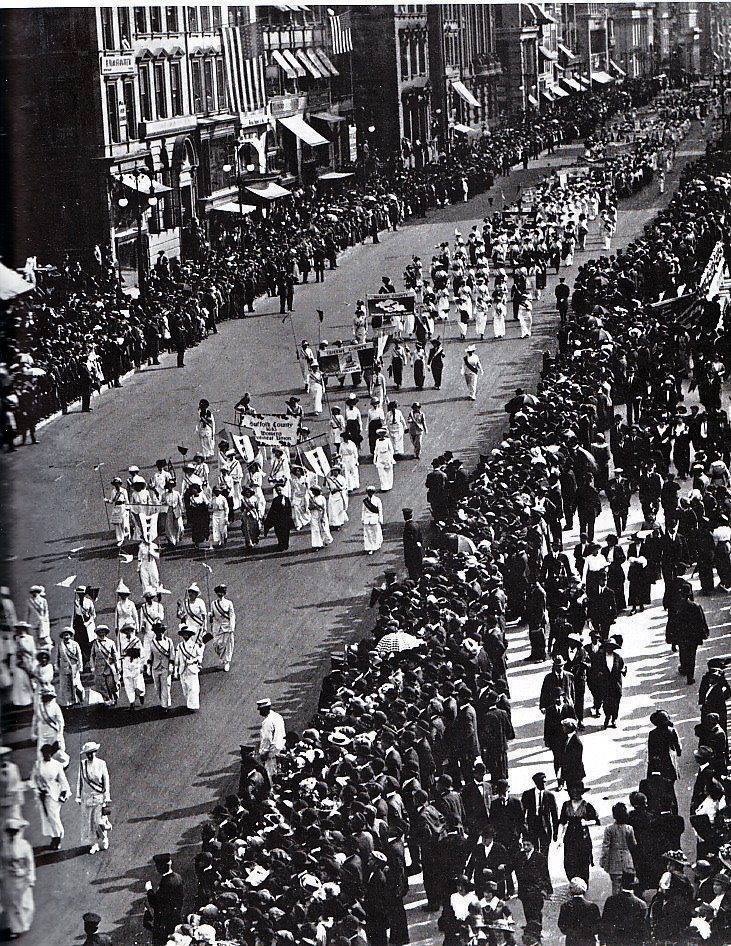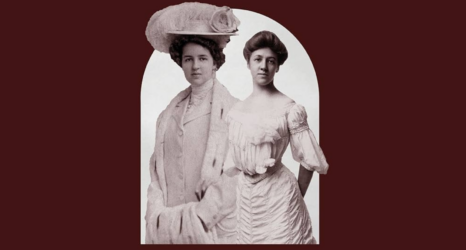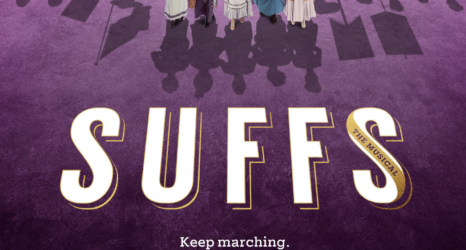
Today in Feminist History is our daily recap of the major milestones and minor advancements that shaped women’s history in the U.S.—from suffrage to Shirley Chisholm and beyond. These posts were written by, and are presented in homage to, our late staff historian and archivist, David Dismore.
May 3, 1913: “Heat” may now be added to the list of things which do not discourage New York suffragists from marching!

Despite the temperature reaching a humid 87 degrees as the marchers stepped off this afternoon, a parade of “Votes for Women” advocates so long that it took nearly two hours to pass went off as scheduled and was a success from every possible point of view.
Watching the cheering crowds and seeing the long lines of marchers receive salutes from a reviewing stand packed with city and State officials, plus other dignitaries, it’s hard to believe that just five years ago a suffrage march was considered a “radical” idea.
When 23 women defied custom—and the police—to stage the first one on February 16, 1908, it was front page news, and a subject of great public controversy. The wisdom of the Progressive Woman Suffrage Union holding such an event was hotly debated by other suffrage groups for weeks. But having been repeated every year since 1910, each time with far greater participation than ever before, plus growing support from well-established suffrage organizations and well-known individuals, annual suffrage parades have now become an established city tradition.
The fact that over a thousand police officers were present to protect the marchers, and that they were quite attentive to their duty is a tribute to the growing prestige of our movement.
Of course, avoiding the acute embarrassment suffered by Washington, D.C. police on March 3rd, when adequate security for a major suffrage march and pageant was clearly lacking, may also have contributed to the size of the detail assigned.
The well-disciplined suffrage army was led down Fifth Avenue by equestrian Inez Milholland, with eight women dressed in blue, holding silken flags bearing the names of the parade’s co-sponsoring groups, right behind her.
They were followed by two women in “suffrage yellow” carrying a huge map showing the nine Western States in which women have already won equal suffrage. Then came the main body of marchers, representing a diverse spectrum of society, vividly demonstrating the wide support woman suffrage now enjoys. The vast majority of marchers did well in following their orders: “Eyes to the front. Heads erect. Shoulders back. Dignity and silence.”
“General” Rosalie Jones and other veterans of February’s long suffrage trek from Newark, New Jersey, to Washington, D.C., were once again in their hiking outfits, carrying their walking sticks. They were given especially big cheers by the crowd as they marched behind a brass band as a troop of Boy Scouts proudly escorted them.
Behind Jones’ suffragist “Army of the Hudson” came contingents grouped according to occupation. As might be expected, teachers were extremely well represented, but every job from social worker to sculptor had its practitioners proclaiming their support for the cause.
Organized labor recognizes that woman suffrage will be of great help in achieving its goal of dignity, safety, and fair wages for all workers, so many unions were here today marching behind a banner proclaiming: “In Union There Is Strength.”
The Political Equality Association was represented by a thousand women dressed in the now-traditional white, marching behind banners whose messages, along with the fifty new banners carried by the Women’s Political Union, could easily be seen and understood by onlookers.
Just a small sample read: “Let The People Rule: Women Are People,” “Government Is Housekeeping and Homekeeping,” “Politics Governs Even The Purity Of The Milk Supply. It Is Not ‘Outside The Home,’ But ‘Inside The Baby.’ ” The persistence of suffrage advocates was shown by one elderly woman carrying a banner that read: “Getting There After Fighting Forty Years.'”
Another thousand marchers were composed of college women, divided into groups, each with a banner denoting their school. The “Seven Sisters” of Vassar, Wellesley, Smith, Barnard, Mt. Holyoke, Bryn Mawr and Radcliffe were especially well represented.
But the parade was not composed of women only. One of the sponsoring groups was the Men’s League for Woman Suffrage, whose members marched under banners from many different States, proving that enthusiastic support for suffrage was not limited to women plus just a few men from New York City. A contingent of pro-suffrage newsboys followed behind the men, and though briefly distracted when scrambling to pick up coins tossed at them from bystanders, their presence was still appreciated.
Music was everywhere, courtesy of approximately 40 marching bands. Though there were somewhat fewer renditions of “Turkey Trot” tunes this year than last, the singing of the “Women’s Marseillaise” was strongly encouraged, and the new words for an old tune are now becoming quite familiar to all who attend suffrage events.
Today’s parade and the two rallies that followed were celebrations of a victory as well as the kickoff to a campaign. Both the New York State Senate and Assembly have passed a bill calling for a suffrage referendum in 1915, and though they must do so again, the bill should pass the required second time.
Never have the male citizens of New York State had the opportunity to vote on woman suffrage, and never has the time seemed so ripe for a victory at the polls. If the support and enthusiasm shown today can be kept up – and hopefully even increased – over the next two and a half years, the nation’s most populous State will become the country’s most prestigious equal suffrage State on November 2, 1915 !





